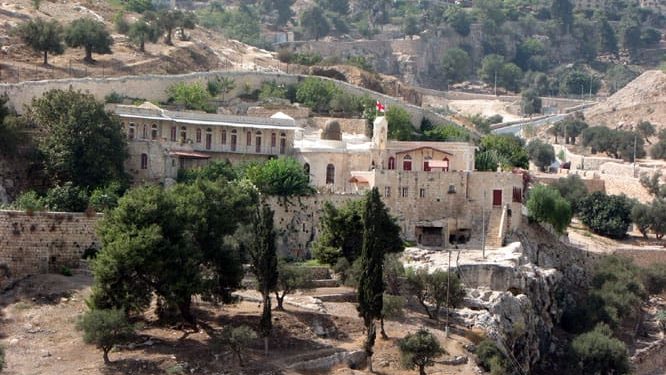The field of blood (Akeldama) is the name of an area in Jerusalem just outside the Old City. According to Christian tradition, this lot was bought with the money received by Judas Iscariot for handing Jesus over to the Romans. The area has been used since ancient times as a public burial ground, mainly for Christian pilgrims who died during their visit to Jerusalem. Today, a monastery belonging to the Greek Church called Onuprius Monastery is located on the property.

Credit: Avi Nahmias, Attribution, via Wikimedia Commons
The Field of Blood In Christian Tradition
In the Christian tradition, there are two versions regarding the plot purchase. According to the Acts of the Apostles, Judas Iscariot bought the field with the money he received for betraying Jesus and died on the spot. According to another version, Judas felt great remorse after the crucifixion, so he confessed to the Jewish Priests, threw the money at them, and went and hanged himself (Gospel according to Matthew)
3 When Judas, who had betrayed him, saw that Jesus was condemned, he was seized with remorse and returned the thirty pieces of silver to the chief priests and the elders. 4 “I have sinned,” he said, “for I have betrayed innocent blood.”
“What is that to us?” they replied. “That’s your responsibility.”
5 So Judas threw the money into the temple and left. Then he went away and hanged himself.
6 The chief priests picked up the coins and said, “It is against the law to put this into the treasury since it is blood money.” 7 So they decided to use the money to buy the potter’s field as a burial place for foreigners. 8 That is why it has been called the Field of Blood to this day.
(Matthew 27:3-8)
Akeldama (Field of Blood)

Credit: Michaeli, CC BY-SA 2.5, via Wikimedia Commons.
Akeldama As A Cemetery
In early Christian traditions, burial in the field of blood was considered a great virtue. According to this, those buried in this plot are exempted from the judgment at the end of day. Also, the tradition says that the bodies in this plot decompose rapidly without leaving a bad smell.
Following these beliefs, in the Middle Ages, taking dirt from the plot and spreading it in cemeteries in Europe was customary. In 1218, a ship arrived in the Holy Land to take land from here for the cemeteries of Pisa in Italy.
Many graves are scattered, and human bones are found in the various caves. A public burial structure from the Crusader Kingdom of Jerusalem that was used for public burials during the Crusader days stands out. The central arches of the complex are still standing to this day. The corps of poor pilgrims who died during their pilgrimage to the holy city were thrown into.
Monastery of Onophorius
In 1892, the Greek Church built a monastery in the Field of Blood. It was named after Saint Onuphrius. According to the orthodox Christian tradition, Onuphrius was born as a woman. Then, due to the persecution of a stubborn suitor, she asked God to become a man.
Saint Onuphrius began his monastic career in Thebes. Later, he retired from the monastery and lived in total isolation in the Sinai Desert. Ultimately, he was one of the leaders of the Judean desert Monasteries in the fourth century.
Not only around the monastery but also inside, it can be seen in many burial caves. The monastery’s church was built inside a burial cave. At the entrance to the sanctuary and in the center of its courtyard, there are also complex, decorated, and preserved burial caves. The bones of monks killed according to tradition during the Persian invasion in 614 CE lie in the caves. A visit to the monastery can go well in my Jerusalem Old City Tour.

